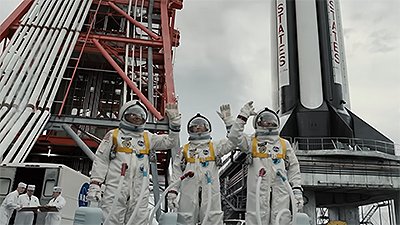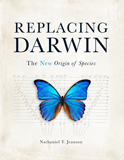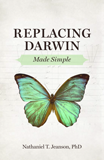
Kingdom of the Planet of the Apes: Movie Review
A sci-fi transhumanist film about the relationship between humans and apes
[Spoiler Alert: This review reveals certain elements of the movie’s plot, but only to the extent necessary to convey the negative and positive aspects of the film.]
The beginning of the movie starts with the funeral and cremation of Caesar, who was fatally injured by an arrow in the previous movie (War for the Planet of the Apes). Then we are thrust forward in time by several generations (about 300 years). The new scenario is that humans and apes have not seen each other in 10 years, and the few encounters are usually fleeting with no communication between them.
The Way of the Eagle
The different ape tribes have spread out and follow their own ways, and they have little interaction with other tribes. In fact, the tribe seems to be the center of civilization. We are introduced to the Eagle tribe, which steals eagle eggs from nests and raises the chicks to bond with their captors. The apes use the eagles to hunt (mostly for fish). Our introduction to the Eagle tribe begins with an egg raid from three members of the tribe—Noa (whose father is the master of birds), Anaya (Noa’s best friend), and Soona (who may be Noa’s future girlfriend). After several harrowing situations, they all succeed in getting an egg and head back to their tribe’s home.
Along the way to and from the eagles’ nests we see several clear evidences of human civilization being swallowed up by the rainforest (the film is supposed to be located in the Pacific Northwest, although it was filmed in New Zealand). The CGI effects of this (and also of the apes’ movements and facial expressions) are incredible.
As the group returns to their tribe (mostly chimps and bonobos), we find out that Noa and his father’s relationship is strained and that the eagles do not like Noa. Later that evening, Noa sees a human girl inside the village, and his animosity toward her causes him to be lax in protecting his egg, which gets broken. Noa and the other apes have taken to calling any human they see as “echoes,” presumably because they are echoes of the past, not commonly seen.
The Quest
As Noa leaves the village for another attempt at finding an eagle egg, he spies another group of apes (mostly gorillas) wearing masks, who have raided a nearby sentry outpost (of the Eagle tribe) and have taken captives and even killed an ape. This is a big taboo, carried over from the time of Caesar. As Noa hides from them, his horse is spotted by the gorillas, and they spook it so that they can follow it back to its home. The horse leads them directly back to the Eagle tribe’s home, where they destroy everything and kill Noa’s father, taking everyone else captive. Noa vows that he will find his tribe and bring them back home, thus starting the quest part of his journey.
As Noa begins his search, he runs across an orangutan named Raka, who is a keeper of lore and knows that Caesar originally wanted humans and apes to live side by side. He claims that most apes have forgotten Caesar’s teachings or have misunderstood them. Noa is not fond of humans, and he considers them scavengers at best and dangerous at worst. When the same human girl turns up outside Raka’s encampment, Noa tries to scare her away, but Raka says to “show mercy” and offers her food and a blanket for warmth. We also learn that Noa’s tribe has forgotten how to read and that apes name all human girls “Nova.”
At some point, Noa spots a large telescope, looks into the eyepiece, and is amazed at what he sees (presumably stars and planets). When Nova does the same a few minutes later and shows the same look of wonder, Noa knows that humans are more intelligent than he gave them credit for.
Original PoA Movie Strongly Influences This Section
There are some clear references to the original Planet of the Apes movie (1968) as they enter what is called the “forbidden zone.”
Noa and Raka decide to leave together on horseback (taking Nova with them) to find the Eagle tribe. There are some clear references to the original Planet of the Apes movie (1968) as they enter what is called the “forbidden zone.” The musical score even reverts to the one from the original movie, and the same X-shaped crosses with “scarecrows” on them are also a throwback. Next they see a herd of zebras as well as many humans together at a river. Before they can go down to investigate, a loud hunting horn sounds, and the gorillas and other apes they have been tracking crash down into the river valley to hunt and capture. Again, the “apes hunting humans with dragnets and rifles” scene is taken straight out of the original movie.
Later, after almost being captured, Nova screams Noa’s name, and he comes to the rescue. That evening, she tells them her name is Mae, which (along with her yelling his name earlier) surprises Noa, as he did not think humans could speak (just like in the original movie). But the gorillas and other apes they have been tracking find them again. After a brief tussle, Noa and Mae are captured, and Raka is drowned in the raging rapids.
A New Caesar in Town
After waking up a captive, Noa is reunited with his tribe. He finds that the Eagle tribe has become forced subjects of Proximus Caesar, who has been raiding tribes and molding them into his “kingdom.” Proximus even has a captive human (Trevathan), whom he keeps around to read to him (proving that the Eagle tribe members aren’t the only apes who have forgotten how to read). Proximus’ kingdom is centered around a huge oceanside barge and human military installation.
It is here that we get an insight into what apes think of “evolution.” Proximus states that technology is required for instant evolution. Apes cannot evolve further until they understand all human technology. Ironically, Proximus thinks that going back to the past will ensure the future of apes, confusing “evolution” with acquired knowledge. Proximus knows that there is a vault inside the military installation and has been harnessing the power of all the ape tribes in a futile attempt to open it. Proximus tries to persuade Noa to help him, but Noa feigns ignorance (even though Mae has told him a little bit about that technology). Proximus also divulges that the only way for apes to survive is to eliminate all humans.
Later that night, Noa, Mae, Anaya, and Soona decide to break into the vault, as Mae knows another way in. While attempting this, they are spotted by Trevathan who lets on that he will tell Proximus, so Mae kills him, and they dump his body into the sea. Noa is visibly shaken by this as he (likely) assumed that humans have a “humans don’t kill humans” code like the apes do. Once inside the installation, they find that the power still works, and they begin to explore
The Way Things Used to Be
Noa soon comes to realize that the old stories are true, that humans did once rule the planet. They find a girl’s doll which says “mama” (again taken from the 1968 movie) and several picture books, one of which shows humans looking at apes behind bars at a local zoo. They also spot tanks, jeeps, bombs, and guns, showcasing how advanced humans were before the Simian virus erupted (introduced in 2011’s Rise of the Planet of the Apes and further fleshed out in 2014’s Dawn of the Planet of the Apes). Mae claims she is looking for a “book” that will teach her people to speak again.
But we get some hints that for those humans not killed by the Simian virus, none of the effects previously mentioned (decreased intelligence and loss of speech) have happened. The movie might be hinting that genetic resistance to the virus mitigated all the side effects in the remaining population.
Heading Home, Human Communication, and Final Thoughts
A few plot-twists ensue, but suffice it to say, Noa (as he vowed) leads his tribe home, and they begin to rebuild. It seems as if they will pick up exactly where they left off. The Eagle tribe will survive as if nothing happened, and with no real lessons learned.
Mae, meanwhile, goes back to her people—which turns out to be a thriving collective of scientists and engineers—poised to use the “book” she brings back to advance their communication with other enclaves of people. The “book” is actually a hard drive which will allow humans to communicate over vast distances, setting up the next movie where humans will have the upper hand by being coordinated against the now-isolationist apes.
It seems clear from the last few scenes of the movie that the surviving humans have been deceptive about their abilities and were biding their time, waiting for a means to unite all peoples. Whether this is solely for survival, as a means to eliminate the apes, or as a way to get back to the way life was, is unknown.
The movie was fast paced, had fantastic visual effects, and showed us the juxtaposition of human and ape thought on “family.” The apes were very tribe-oriented, almost to the exclusion of other relationships; whereas the humans were more forward-thinking, looking at the big picture of what was required to bring back civilization. The evolutionary content was almost negligible, and what existed was more of a nod to transhumanism (or is that pan-apeism?) in that technology is viewed as the savior of the human (or ape) universe.
In the real world we live in, apes are not made in the image of God, only humans are. We alone are responsible to God for our thoughts and actions.
But in the real world we live in, apes are not made in the image of God: only humans are. We alone are responsible to God for our thoughts and actions. The animal kingdom (even in a fallen world) automatically praises its Creator (Psalm 104:10–30). And rather than looking to transhumanism as the salvation of humankind, we need to realize that our problem is corrupt minds and hearts and sinful, self-centered wills. The only cure for those conditions is Christ and his free gift of salvation (Romans 10:9–10). Ironically, there is no ultimate need for most transhumanist ideologies (except those used to mitigate effects of the curse), as those of us who are in Christ will receive a perfect resurrection body at the consummation (1 Corinthains 15:42–56).
Recommended Resources

Answers in Genesis is an apologetics ministry, dedicated to helping Christians defend their faith and proclaim the good news of Jesus Christ.
- Customer Service 800.778.3390
- Available Monday–Friday | 9 AM–5 PM ET
- © 2026 Answers in Genesis






